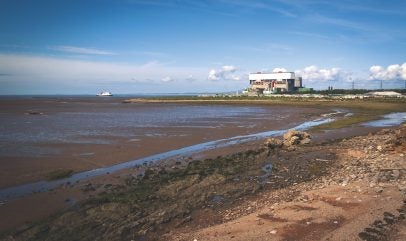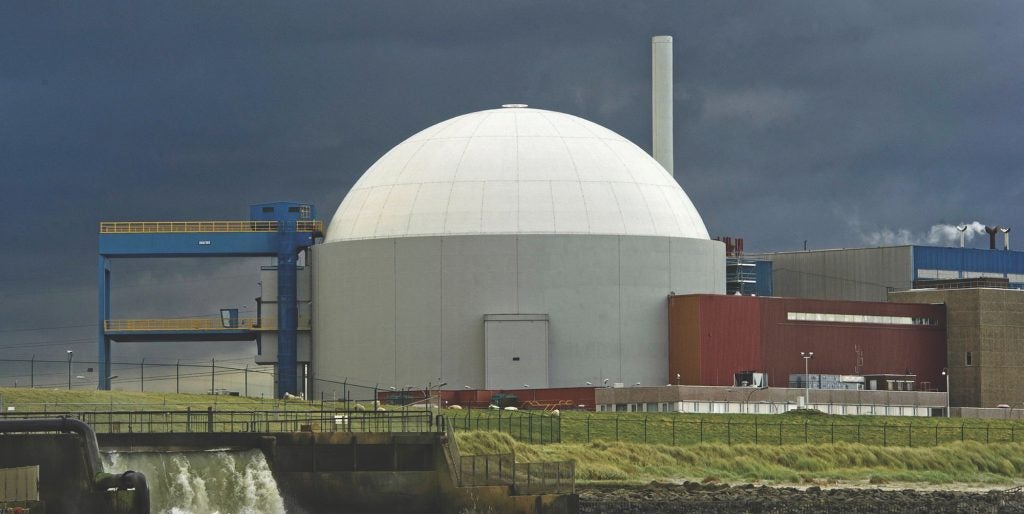
According to the International Atomic Energy Agency (IAEA), more than two-thirds of the world’s 442 nuclear power reactors are now over 30 years old and approaching or already surpassing the end of their originally anticipated 40-year lifespan.
Around 100 of those reactors globally have already had their operating licences extended. However, the IAEA also projects that, unless more operating licences are extended, existing nuclear capacity will decline sharply before 2030, particularly in Europe and North America, with all existing plants scheduled to retire by 2060.
Set against the background of an electricity generation sector that faces the immense challenge of shifting almost entirely from fossil fuels to low carbon energy sources by 2050, extending the lifespan of nuclear power generation plants could provide an effective route to help meet the future low emissions energy goals.
Although nuclear plants themselves do not have a set-in-stone lifespan, their components do. To continue to run a plant beyond the design mark that every nuclear facility was built with, it is essential to make a case that nothing has deteriorated that could cause problems if left unaddressed. A recent example of this is EDF Energy extending the operating life of its Hartlepool and Heysham 1 nuclear plants by two 2 years to March 2026, having originally been due to end generation in 2014. To achieve this objective, EDF needed the justification to state their extension case to the UK’s Office for Nuclear Regulation (ONR) in the shape of proof that the plants can safely achieve what they want them to.
It is important to also state that the lifetime extension justification process equally applies to any organisation with a nuclear licence, not purely power generation plants. Key to successful life extension for nuclear power plants is the modelling and simulation processes required to support nuclear risk assessments from a Finite Element Analysis (FEA) and seismic walkdown perspective.
Stating the case for lifetime extension
There are clear arguments for lifetime extensions for existing nuclear plants. Compared with a nuclear new build, lifetime extension projects can be far less capital intensive, with significantly shorter construction times, better cost controls and less construction delays. Under these circumstances it makes sense to state the case for lifespan extension, particularly against pressing emissions reduction targets. However, lifetime extensions must look way beyond the reactor core itself and its behaviour. Every aspect of a nuclear plant’s operation should be assessed and proven to remain capable of safe operation.
The case for lifetime extension focuses on the operator evidencing that they have identified and are safely managing any ageing effects in systems, structures, and components. Furthermore, it should confirm that the operational, structural and environmental parameters and conditions have not deteriorated and that risks to individuals and the environment have not increased.
Safety sits at the heart of any lifetime extension plan and within their revised Safety Case, operators should consider any new or escalated levels of risk, hazard, or new standards that have been introduced. It is also important to consider that the Safety Case will be constantly evolving as equipment is replaced after reaching the end of its original design life.
In establishing a safety case nuclear plant operators have to consider several areas while establishing the evidential case for extending the lifespan of their nuclear plant operations.
Among these considerations, the role of modelling, simulation and seismic walkdowns to support nuclear risk assessments are important factors. For instance, by using Finite Element Analysis (FEA), the behaviour of structures, plants and equipment can be studied when subjected to both normal operating (day-to-day) design loadings and extreme hazards such as seismic, weather impact and blast loads. These include linear and non-linear approaches and analysis methodologies.

Seismic walkdowns are also invaluable in this assessment process, providing a real time review of the facility, its infrastructure and the plant and equipment in its current condition and location. This is important as it can take account of any variations from concept, design or installation drawings or references and assesses the true condition, including material degradation and damage. Additionally, the seismic walkdown review enables the identification and consideration of potential interactions with adjacent plants and equipment that could occur during seismic events, which might not be considered by a desktop-based assessment.
Seismic walkdown
Both FEA and seismic walkdown processes can be used to look at new Installations where operators should provide detailed design analysis and assessments for any new structures, cranes or plant and equipment. It is important to demonstrate that existing structures and plants have been assessed for the potential impact of new hazards or loadings that could impact the safety case.
Operators should therefore consider structural assessment and substantiation against static and dynamic load cases, including blast, seismic and other natural hazards, such as climate change impacts.
In addition, the design of structural elements, connections and retrofit solutions to mitigate structural vulnerabilities should also be assessed along with the production of engineering substantiation calculations with technical specifications and drawings.
Furthermore, the impact of new installations with respect to existing structures, plant and equipment should also be assessed as well as an Independent Technical Assessment (ITA).
New and existing mechanical plant and equipment should be assessed against normal operations or extreme load cases as part of engineering substantiation. Review areas should include:
- Facility walkdown assessments
- Engineering calculations to substantiate equipment and support systems
- Design of retrofit solutions packages
- Stress and fatigue analysis of pipe systems
- Analysis of pressurised systems
- Analysis of electrical supplies
- Equipment qualification utilising the Seismic Qualification Utility Group (SQUG) Generic Implementation Procedure (GIP)
- Crane analysis and design review
Considering cranes in particular, operators should understand the potential vulnerabilities associated with their cranes by quantifying associated risks, reducing potential safety and operational impacts. By considering variances in loading conditions, a detailed analysis can take place to understand the integrity of the structure. Review areas should include:
- Structural / mechanical stress analysis
- Seismic assessment with coupled structural assessment
- Dynamic loading
- Structural plastic deformation
- Fatigue and stress condition analysis
- Design review against international codes of practice
Stating the Safety Case for extending the lifespan of a nuclear facility involves multiple complex processes involving every operational aspect of a plant. For those looking to extend the lifetime expectancy of a plant, having a clear, thought through plan utilising FEA and Seismic Walkdown methodologies, can be greatly beneficial.
Author: Andrew Buckley, Technical Manager, ABS Consulting Ltd






